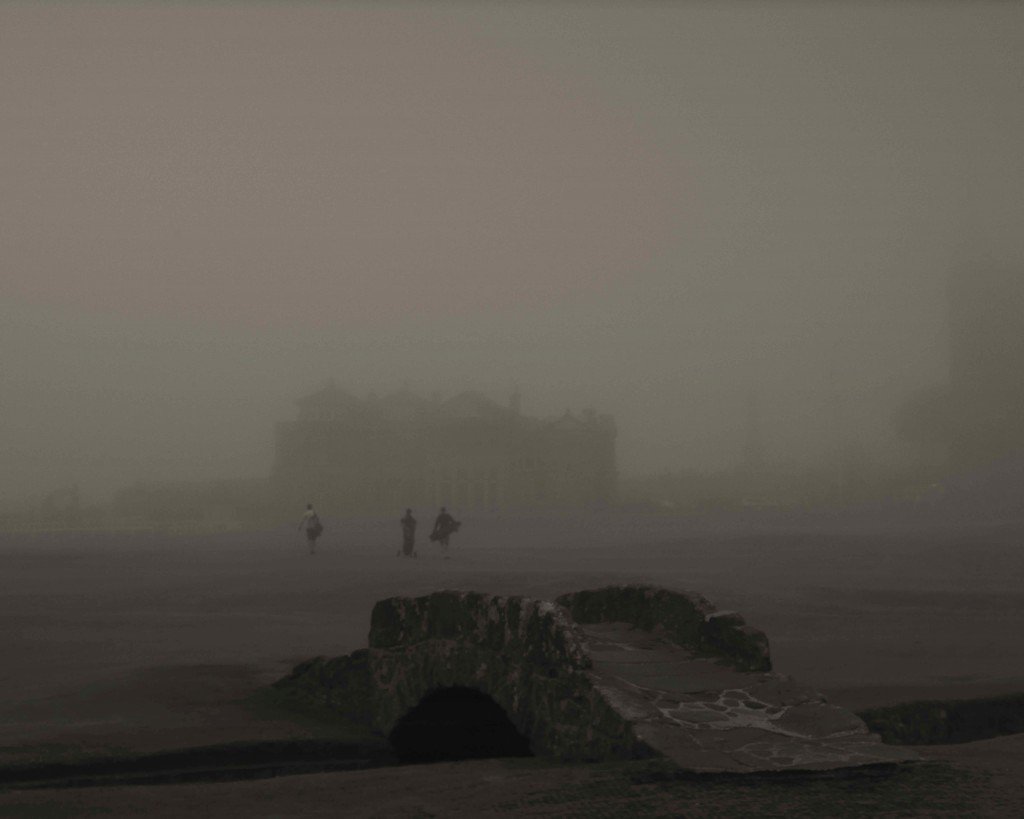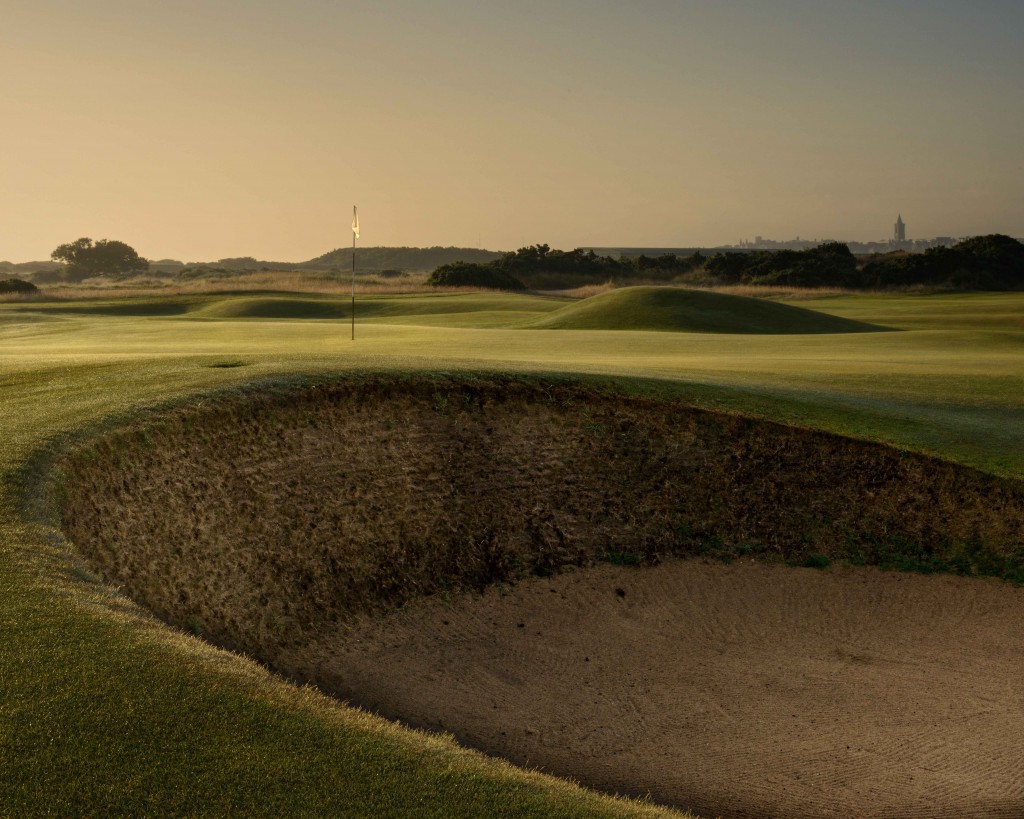Think about this for a moment. In the long history of the game Scotland gave to the world, every great golfer, except one, has played the Old Course at St Andrews. A partial roll call would include Allan Robertson, Tom Morris (Young and Old), Harry Vardon, Bobby Jones, Gene Sarazen, Sam Snead, Peter Thomson, Arnold Palmer, Jack Nicklaus, Seve Ballesteros, Tiger Woods and Rory McIlroy. Pretty much any even near-great you could name has teed up on the 18th, aimed at the clock on the iconic R&A clubhouse and then walked across the Swilcan Bridge.
The exception was that legendary figure of single-mindedness, Ben Hogan, who won the Open Championship at nearby Carnoustie in 1953 but never took time to visit the Home of Golf. It was the ever-stoic Texan’s loss. Standing on the first tee, or striding up the final fairway is golf’s equivalent of a spiritual experience. Jones’ immortal words still say it best: “I could take out of my life everything except my experiences at St Andrews, and I’d still have a rich, full life.” For any golfer not to form at least a brief relationship with the Auld Grey Toon is a grave omission indeed.
Like most golfing Scots, my experiences at St Andrews are indelible in my memory. I’ve hit into the Swilcan Burn. I’ve played from Hell Bunker. I’ve shanked off the tee at the par-3 eighth – and finished on the green. I’ve taken more than a few shots to escape from the Road Hole Bunker. I’ve played from the eponymous road. I’ve hit from Grannie Clark’s Wynd, the gravel path that runs across the 18th fairway. I’ve putted from the Valley of Sin. I’ve birdied the first and the last in the same round. So forgive the personal nature of what follows, graphic evidence of just how emotionally charged my affinity with the Old Course has been for nearly half a century.
I first saw the place in 1970. At age 10, I stood on the steps to the clubhouse as the soon-to-be Open champion Nicklaus finished his final practice round. His autograph rests proudly in the wee green book I still have in my office at home.
The lasting memory of that far-off week, however, is of standing behind the 18th as Doug Sanders lined-up a three-foot putt for victory. The colourful Georgian had struck his pitch thin almost to the back of the huge green, left his first putt in exactly the wrong place and duly missed the slightly downhill left-to-righter. The shocked hush that followed is with me still. As is the sight of Sanders’ playing partner Lee Trevino turning abruptly away.
I missed the 1978 Open at St Andrews but watched on television from San Diego, where, as Scottish Boys champion, I was competing (albeit briefly) in the Junior World Championship. But three years later I was back to play in the British Amateur, drawn against a two-time former champion, American Dick Siderowf, in the first round. An imposing and intimidating figure, Siderowf was a beautiful swinger of the club and a formidable opponent for the impecunious 20-year-old who stood before him on the first tee. As my best friend remarked to me after the match, “I’d rather watch him walk down the fairway than watch you hit a shot.”
Siderowf turned out to be silent as well as stylish. Not one word passed between us until we shook hands on the 16th green. “Thanks for the game, Dick,” I said. “Enjoy your flight.”
One day later, I was embroiled in something of an epic second-round match with a Tasmanian by the name of Paul Beard. One-up playing the last, I missed Doug Sanders’ putt to send the game into extra holes. I can still see the anguish on my caddie/grandfather’s face after I lipped out, but also his smile after I holed from 25 feet to win at the 21st. A non-golfer, “Big Joe” was a former prisoner of war (3½ years on an island in the Pacific) not much given to spontaneous emotion. But it meant a lot to me to see the obvious pleasure he got from being involved in my golf.
Less than a month later, I was back at the Old Course as part of the six-man Scotland side at the European Amateur Team Championship. George Macgregor, the current captain of the Royal & Ancient Golf Club was one of my teammates. Even now, 34 years later, I can vividly recall the lack of feeling I had in my swing as I hit off the first tee. I’d made the mistake of peaking down at my sweater and seeing the word Scotland on my upper-left chest, causing my eyes to well with tears.
That week ended in disappointment, as we lost, 4-3, to an England side containing future Ryder Cup player Paul Way and now former US Senior Open and Senior PGA champion, Roger Chapman. But my love affair with the Old Course was well established.
On July 22, 1984 I sat all day alongside my pal, John Grant (ironically now employed by the St Andrews Links Trust and a member of the R&A’s rules committee) in the huge grandstand to the right of the first/18th fairway watching the Open Championship field tee off during the final round.
Famously, that day came down to the last two pairs. The penultimate was Ballesteros and Bernhard Langer. By the time they reached the final hole, the German had putted his way out of contention. But Seve, courtesy of an inspired approach to the treacherous Road Hole green, was tied with Tom Watson, who was playing behind alongside Ian Baker-Finch.
After Ballesteros hit his tee shot up the yawning 18th fairway, we glanced right to see Watson’s 2-iron approach to the 17th. From the ideal spot on the right side of the fairway, the already five-time Open champion hit what commentator Dave Marr would call “the wrong shot with the wrong club at the wrong time.” The ball finished against the wall across the road and a bogey ensued.
Meanwhile, Ballesteros had struck his final approach to about 12 feet from the pin. In went the putt for what was surely a clinching 3, as we stood as one in tribute. His celebration remains the most memorable in the history of the game. If you haven’t seen it, you’re not a golfer.
Five days later, I stood where the great man had walked, holed out to the same pin position for a par 4 and won an international student event called the Boyd Quaich. The stands were still in place, but no one stood up as my ball fell into the cup on the topside because no one was there. Still, the feelings were the same. Winning an event at St Andrews – any event – is unforgettable.
Since those relatively youthful times, my interaction with the Old Course has been more professional than personal. I have worked there as a journalist at four Open Championships, a Ladies British Open, a Curtis Cup and who knows how many Dunhill Cups and Dunhill Links Championships. I even had the rare opportunity to sit in the Old Course Hotel with Woods (and Mark O’Meara) and interview the man who has surely played better golf than anyone ever has.
So, though it would be an exaggeration to say the depth of my feeling for the Old Course exactly mirrors that of Jones back in 1958 when he received the Freedom of St Andrews, I know exactly where he was coming from.





